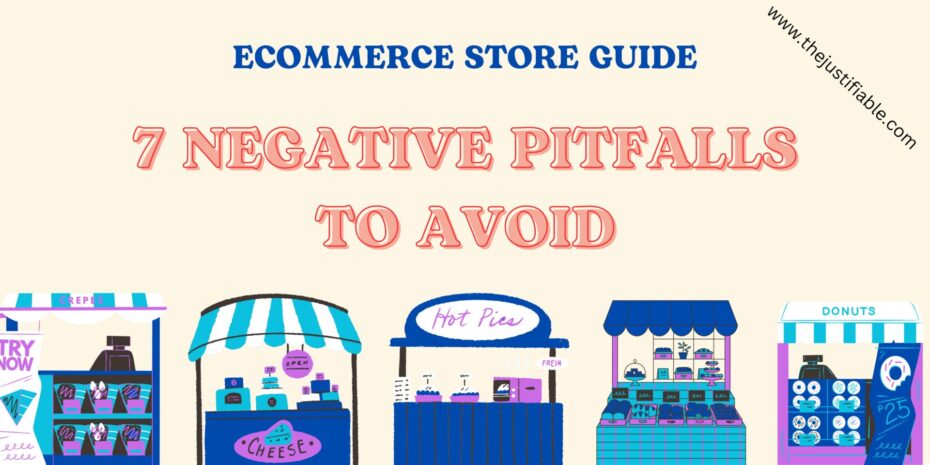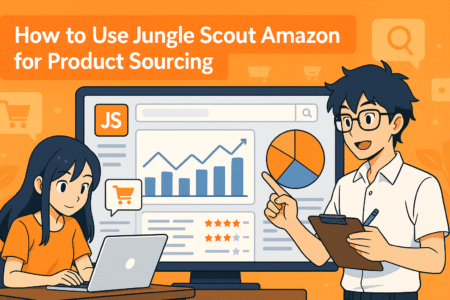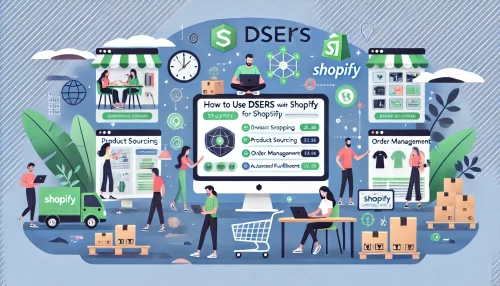Table of Contents
Ecommerce stores have revolutionized the way we shop, offering unparalleled convenience, variety, and accessibility. Yet, navigating the digital marketplace can be fraught with challenges that may hinder growth and profitability.
As more businesses flock online, understanding the pitfalls to avoid becomes crucial for those looking to carve out their niche in the ecommerce landscape. This guide illuminates seven common mistakes that can derail your ecommerce store’s journey to success.
From ignoring the fundamentals of user experience to underestimating the power of SEO, we delve into actionable strategies designed to safeguard your online store against common oversights. Join us as we explore how to turn potential pitfalls into stepping stones for your ecommerce store’s growth and success.
1. Ignoring User Experience: A Fatal Ecommerce Store Blunder
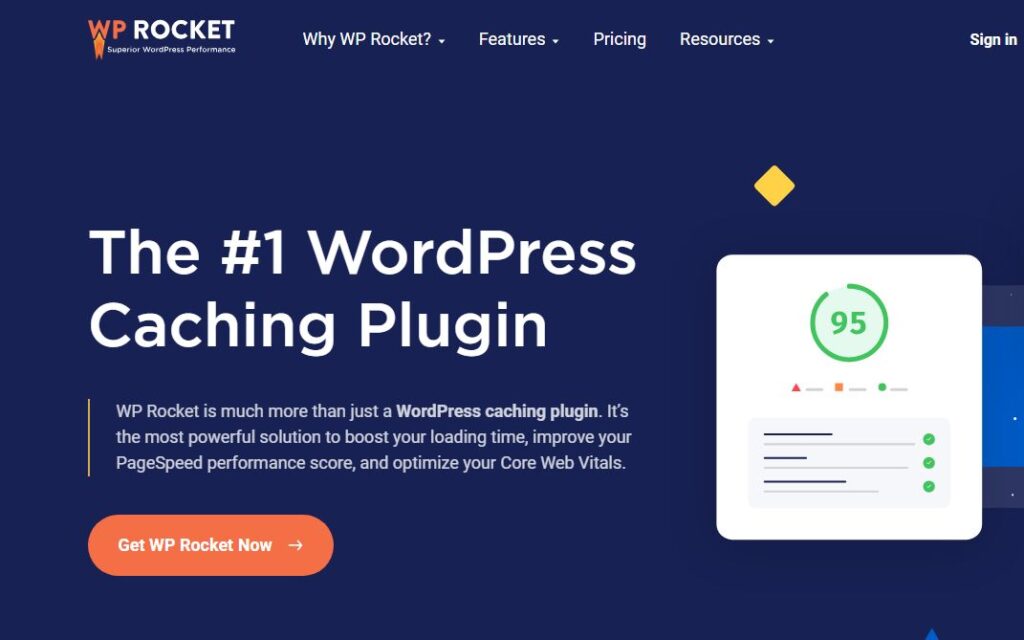
Have you ever left an online store because it was too difficult to find what you were looking for, or because the website took forever to load? This scenario is far too common and highlights a critical mistake many ecommerce store owners make: ignoring the user experience (UX). Ensuring your visitors have a positive interaction with your website is not just about aesthetics; it’s about driving sales and fostering customer loyalty.
User experience encompasses every aspect of the user’s interaction with your company, its services, and its products. For ecommerce stores, this means providing a seamless, efficient, and enjoyable shopping experience from homepage to checkout. Ignoring UX can lead to increased bounce rates, abandoned carts, and ultimately, lost sales. In contrast, a focus on user-friendly design and functionality can significantly boost conversion rates and customer satisfaction.
Consider the layout of your ecommerce store. Is it intuitive and easy to navigate? Are your products organized in a way that makes sense to your target audience? These are critical questions that need answers. A well-designed site structure guides customers smoothly through the buying process, reducing frustration and helping them find what they need without unnecessary clicks or confusion.
The Impact of Site Navigation on Sales Conversion
How easily can visitors navigate your ecommerce store? The answer to this question can significantly impact your sales conversion rates. Intuitive site navigation not only enhances the shopping experience but also encourages customers to explore your site further, increasing the chances of making a purchase. A complicated or confusing navigation structure, on the other hand, can frustrate potential buyers, leading them to abandon their carts and look elsewhere.
Effective site navigation starts with a clear and concise menu that categorizes products logically. Dropdown menus can be useful for stores with extensive product ranges, allowing shoppers to go directly to the items they’re interested in without sifting through irrelevant pages. Including a search bar is another crucial element, enabling users to quickly find specific products or categories.
Your site’s navigation should also facilitate a smooth journey from product discovery to purchase. This means clear calls-to-action, straightforward checkout processes, and minimal steps to complete a transaction. Each element of your site’s navigation should be designed with the goal of leading the customer closer to making a purchase.
Analytics play a vital role in optimizing site navigation. By analyzing user behavior, ecommerce store owners can identify navigation pain points and opportunities for improvement. Are there pages with high exit rates or sections of your site that are rarely visited? These insights can guide adjustments to your site’s structure and navigation elements, enhancing usability and potentially increasing your conversion rates.
Mobile Optimization: A Must-Have in 2024
As we move further into 2024, the importance of mobile optimization for ecommerce stores cannot be overstated. With a significant portion of internet traffic coming from mobile devices, your store’s mobile-friendliness is now a critical factor in attracting and retaining customers. A mobile-optimized site ensures that users have a seamless shopping experience on their smartphones, mirroring the ease and functionality of a desktop experience.
Mobile optimization involves designing your ecommerce store so it looks and performs well on mobile devices. This means large, easily clickable buttons, readable fonts, and images that load quickly and fit the screen. Additionally, mobile-optimized sites prioritize speed and simplicity, understanding that mobile users are often on-the-go and have limited time to browse.
Google’s mobile-first indexing further underscores the necessity of mobile optimization. This means Google predominantly uses the mobile version of the content for indexing and ranking. An ecommerce store that isn’t optimized for mobile not only provides a poor user experience but also risks lower search engine rankings, making it harder for new customers to find you.
Quick Load Times: Keeping Your Audience Engaged
In the fast-paced world of online shopping, speed is everything. Quick load times are crucial for keeping your audience engaged and reducing bounce rates. Studies have shown that pages that take longer than a few seconds to load can lead to increased abandonment rates. For ecommerce stores, this means potential customers may leave your site before they even have a chance to view your products.
Optimizing your website’s speed involves several technical considerations, including image compression, efficient coding practices, and the use of content delivery networks (CDNs). Images can significantly impact page load times; therefore, ensuring they are optimized for the web without compromising quality is essential. Similarly, minimizing the use of heavy scripts and leveraging browser caching can improve site performance.
Web hosting also plays a pivotal role in your ecommerce store’s loading speed. Investing in a reliable, high-performance web hosting service can make a noticeable difference in how quickly your pages load. This is particularly important during high traffic periods, such as sales or holiday shopping seasons, when the volume of visitors can test the limits of your website’s infrastructure.
Lastly, regular performance testing should be an integral part of your website maintenance routine. Tools like Google PageSpeed Insights can provide valuable insights into your site’s performance and offer recommendations for improvement. By prioritizing quick load times, you’re not just enhancing user experience; you’re also boosting your ecommerce store’s potential for higher search rankings and increased conversions.
2. Underestimating SEO’s Power in Ecommerce Success
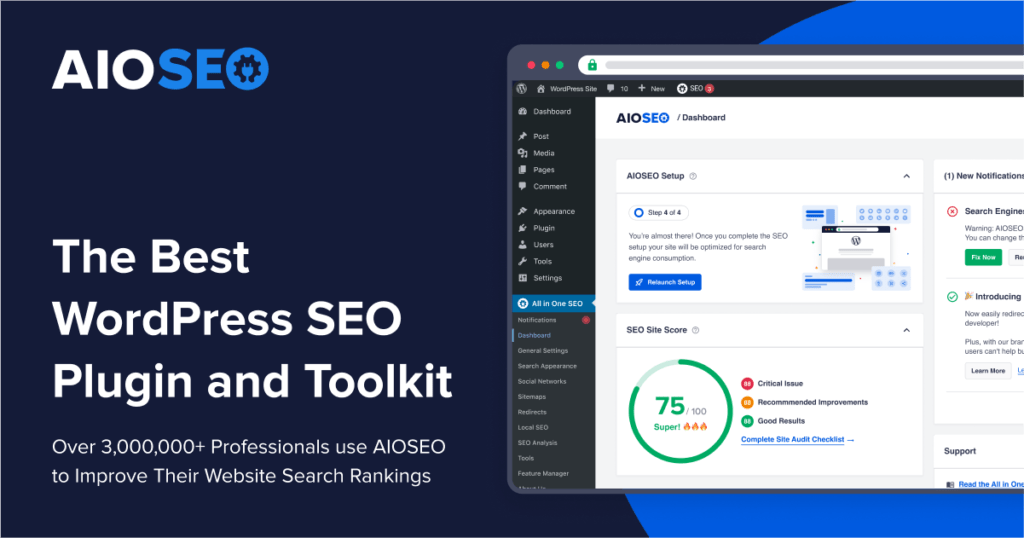
Did you know that 93% of online experiences begin with a search engine? This staggering statistic underscores the critical role of Search Engine Optimization (SEO) in the digital marketplace. For ecommerce stores, SEO isn’t just a marketing strategy; it’s an essential component of online visibility and success. Neglecting SEO can leave your ecommerce store invisible in a sea of competitors, significantly hindering your ability to attract new customers.
SEO for ecommerce stores involves a comprehensive approach to improving your website’s rankings in search engine results pages (SERPs). This includes optimizing your site’s structure, content, and technical elements to meet search engines’ criteria for relevance and user experience. By implementing effective SEO strategies, ecommerce businesses can increase their organic traffic, which often leads to higher conversion rates and sales.
One common misconception is that SEO is a one-time task. In reality, it requires ongoing effort and adaptation to the ever-changing algorithms of search engines. Keeping abreast of SEO trends and updates is crucial for maintaining and improving your ecommerce store’s visibility. Regularly updating your content, optimizing new product pages, and ensuring your site’s technical health are all integral parts of a successful SEO strategy.
Moreover, SEO also involves understanding your audience’s search behavior and preferences. By researching and targeting the right keywords, you can attract more qualified traffic to your site. This means potential customers who are actively searching for the products you offer are more likely to find your ecommerce store.
Keyword Strategy: Your Ecommerce Store’s Best Friend
A robust keyword strategy is the cornerstone of any successful SEO campaign, especially for ecommerce stores. Selecting the right keywords is not just about understanding what your potential customers are searching for; it’s about anticipating their needs and meeting them at every stage of their buying journey. With 70% of marketers seeing SEO as more effective than PPC for generating sales, the importance of a targeted keyword strategy is clearer than ever.
Crafting a keyword strategy involves more than just identifying the most popular terms in your niche. It requires a deep dive into long-tail keywords, which are more specific and often less competitive than their shorter counterparts. These keywords can significantly improve your chances of ranking higher in SERPs because they match closer to the specific queries of your potential customers. For ecommerce stores, this means attracting visitors who are further along in the buying process and more likely to convert.
Incorporating these keywords naturally into product descriptions, blog posts, and meta tags not only helps search engines understand the relevance of your pages but also enhances the user experience. Customers are more likely to stay on your site and explore your offerings if they find content that resonates with their search intent.
Additionally, regularly updating your keyword strategy to reflect market trends, seasonal demands, and changes in consumer behavior is vital. This proactive approach ensures that your ecommerce store remains visible and relevant to your target audience.
On-Page SEO: Crafting Content That Ranks
On-page SEO is the art of optimizing individual web pages to rank higher and earn more relevant traffic in search engines. For ecommerce stores, this means meticulously crafting content that not only appeals to your target audience but also adheres to search engines’ guidelines. High-quality, keyword-rich product descriptions, engaging blog posts, and informative category pages are all critical components of effective on-page SEO.
The goal of on-page SEO is to communicate to search engines the value and relevance of your content. This includes optimizing title tags, headings, and images, as well as ensuring your content provides genuine value to your visitors. Search engines favor websites that offer a rich user experience, which in the context of ecommerce, translates to detailed product information, user reviews, and answers to common questions.
Moreover, on-page SEO extends to the structure of your website. A logical and clear hierarchy not only improves your site’s usability but also its crawlability by search engines. Implementing schema markup can further enhance your visibility in SERPs by providing search engines with precise information about your products and content, enabling features like rich snippets.
Link Building: Establishing Authority and Trust
Link building is a crucial element of SEO that involves acquiring hyperlinks from other websites to your own. For ecommerce stores, effective link building can significantly enhance your site’s authority and trustworthiness in the eyes of search engines. High-quality backlinks signal to search engines that your site is a valuable resource, deserving of a higher ranking in search results.
The process of link building requires a strategic approach, focusing on creating compelling, shareable content that naturally attracts links. Guest blogging, influencer collaborations, and participating in industry forums can all be effective ways to gain valuable backlinks. However, it’s essential to prioritize the quality of links over quantity, as links from reputable, relevant sites carry more weight and can have a more significant impact on your SEO.
Moreover, link building is not just about improving search rankings; it’s also about driving referral traffic and building relationships within your industry. By engaging with related businesses and communities, you can establish your ecommerce store as a trusted authority in your niche. This not only enhances your online reputation but also opens up opportunities for collaboration and cross-promotion.
3. Skimping on Product Descriptions and Images

Just as a window display entices shoppers into a store, product descriptions and images are the showcases of the online world. Yet, some ecommerce stores overlook their power, missing out on a golden opportunity to engage and convert visitors. High-quality images and compelling descriptions not only enhance the shopping experience but also significantly impact your store’s SEO performance.
Crafting detailed and keyword-rich product descriptions helps your ecommerce store in several ways. First, it improves your site’s search engine rankings by providing search engines with more context about your products. This makes it easier for potential customers to find you when they’re searching for the products you offer. Descriptions that skillfully include primary and secondary keywords, without stuffing, are more likely to rank higher in search results.
On the other hand, high-resolution images offer a visual appeal that can instantly grab a visitor’s attention. Images play a crucial role in the decision-making process, as they allow customers to get a closer look at the product, examining details that might not be evident in the description alone. Including multiple angles and zoom-in features can further enhance the shopping experience, giving customers a virtual feel of the product.
Moreover, optimized images and descriptions also contribute to your site’s user experience (UX), a factor that search engines consider when ranking sites. A site that loads quickly and provides valuable information through its descriptions and images is more likely to be ranked favorably.
High-Quality Images: Boosting Ecommerce Store Sales by 30%
The impact of high-quality images on ecommerce sales can be profound, with some stores seeing increases of up to 30%. This significant boost stems from the way visually appealing images capture and hold customer attention, making them more likely to explore your products and eventually make a purchase. High-quality images serve as a silent salesperson, conveying the value and quality of your products without a word.
Investing in professional photography can set your ecommerce store apart from competitors. It demonstrates your commitment to quality and attention to detail, traits that customers appreciate and seek out. Additionally, optimized images can improve your website’s load time, a critical factor in user experience and SEO. Slow-loading images not only frustrate visitors but can also negatively impact your search engine rankings.
To maximize the benefits of high-quality images, consider their role in storytelling. Images that depict products in use or in lifestyle settings can evoke emotions and help customers visualize the product in their own lives. This connection is key to converting browsers into buyers, as it shifts the perception of your products from mere objects to essential elements of a desired lifestyle or solution.
Furthermore, incorporating alt text with relevant keywords in your images can improve your SEO efforts. Alt text helps search engines understand the content of your images, making them more likely to appear in image search results. This additional visibility can drive more traffic to your site, offering another avenue through which potential customers can discover your products.
Engaging Descriptions: How to Captivate and Convert
Engaging product descriptions are your opportunity to communicate the value and benefits of your products to potential customers. A well-crafted description does more than list features; it tells a story that connects with the reader, highlighting how the product can solve a problem or improve their life. This narrative approach can captivate your audience, making them more inclined to make a purchase.
To write descriptions that convert, focus on the unique selling points (USPs) of your products. Describe not just what the product is, but why it matters. Use language that resonates with your target audience, employing a tone that matches your brand voice. This creates a consistent experience across your site, reinforcing your brand identity and building customer loyalty.
Including keywords naturally in your descriptions also improves your site’s SEO, making your products more visible in search engine results. However, the key is to integrate these keywords seamlessly, ensuring the text remains engaging and easy to read. The balance between SEO optimization and compelling storytelling is delicate but achievable with thoughtful writing.
Lastly, encourage customer interaction by inviting questions and reviews. This not only provides social proof that can persuade new customers but also contributes to your SEO efforts by generating fresh, user-generated content. Engaging descriptions are a powerful tool in your ecommerce arsenal, capable of transforming passive visitors into enthusiastic customers.
4. Overlooking Customer Service and Support

“Your most unhappy customers are your greatest source of learning.” — Bill Gates. This quote highlights the critical role of customer service and support in the ecommerce realm. Overlooking this vital aspect can significantly impact customer satisfaction, loyalty, and ultimately, your bottom line. Ecommerce stores must recognize the importance of providing exceptional customer service as part of their growth strategy.
Investing in customer service and support is not just about solving problems; it’s about enhancing the overall customer experience. In the digital age, customers expect quick and efficient solutions to their inquiries and issues. A responsive and helpful customer service team can differentiate your ecommerce store from competitors, making it a go-to destination for shoppers seeking reliability and trust. This commitment to customer satisfaction can lead to positive reviews and word-of-mouth recommendations, driving more traffic to your store.
Moreover, integrating technologies such as CRM systems can help personalize the customer experience, making shoppers feel valued and understood. Personalized support not only addresses the customer’s immediate needs but also fosters a deeper connection with your brand. By tracking customer interactions and preferences, your team can provide tailored recommendations and solutions, enhancing the shopping experience and boosting customer retention.
Customer service and support also play a crucial role in handling negative feedback and complaints. How you respond to criticism can significantly affect your brand’s reputation. A proactive approach to addressing issues, offering solutions, and making amends can turn unhappy customers into loyal advocates. Acknowledging mistakes and taking steps to rectify them demonstrates your commitment to customer satisfaction, reinforcing trust in your brand.
Live Chat: Increasing Conversions by 45%
Implementing live chat on your ecommerce site can lead to a 45% increase in conversions. This statistic underscores the power of real-time communication in facilitating the shopping experience. Live chat provides customers with immediate access to support, answering questions and resolving concerns as they arise during the browsing and purchasing process. This immediacy not only improves the user experience but also significantly impacts purchasing decisions.
Live chat offers a personal touch that can make online shopping more engaging and reassuring. By interacting directly with customers, you can guide them through their purchase journey, offering recommendations and clarifications that can influence their decision to buy. This level of interaction mimics the in-store experience, creating a connection that can enhance customer satisfaction and loyalty.
The convenience of live chat also plays a key role in its effectiveness. Customers appreciate the ability to get quick answers without the need to make phone calls or wait for email responses. This convenience can be a deciding factor for customers choosing between your ecommerce store and a competitor’s. Furthermore, live chat allows for multitasking, enabling customers to continue browsing while they chat, keeping them engaged with your site.
Data gathered through live chat interactions can also provide valuable insights into customer needs and preferences, allowing for continuous improvement of products and services. By analyzing common questions and concerns, ecommerce stores can identify areas for enhancement, tailoring their offerings to better meet customer expectations. This ongoing improvement cycle fosters a dynamic shopping environment that keeps customers returning.
Effective Support: Building Loyal Ecommerce Store Customers
Effective customer support is the cornerstone of building a loyal customer base for your ecommerce store. Loyal customers are not only more likely to make repeat purchases but are also valuable advocates for your brand. By delivering consistent, high-quality support, you can create positive shopping experiences that encourage customers to return and recommend your store to others.
Personalization is key to effective customer support. Recognizing returning customers and customizing support to their history and preferences can make them feel valued and appreciated. This level of personal attention increases customer satisfaction and loyalty, as shoppers are more likely to stick with brands that recognize and reward their loyalty.
Training your support team to understand your products and brand values thoroughly is also crucial. A knowledgeable support team can provide accurate and helpful information, further enhancing the customer experience. Additionally, empowering your team to make decisions and resolve issues quickly can increase customer trust and satisfaction, reducing frustration and negative experiences.
Finally, soliciting and acting on customer feedback is essential for continuous improvement. Feedback can provide insights into what your support team is doing well and where there is room for improvement. By demonstrating that you value and act on customer input, you can strengthen the relationship between your brand and your customers, fostering a community of loyal advocates who feel invested in your success.
5. Failing to Leverage Social Proof and Reviews

It might come as a surprise to learn that 92% of consumers hesitate to make a purchase if there are no customer reviews. This staggering statistic underscores the monumental importance of social proof and reviews in the ecommerce landscape. Failing to harness the power of these elements can significantly hamper the growth and trustworthiness of your online store. Social proof and customer reviews act as a digital form of word-of-mouth, providing potential customers with the reassurance they need to make a purchase.
Incorporating reviews into your ecommerce strategy isn’t just about displaying positive feedback; it’s about building a transparent relationship with your customers. Showcasing a mix of reviews, including the less favorable ones, can actually enhance your credibility. Consumers are more likely to trust and engage with brands that present an honest and comprehensive view of their products. This level of transparency fosters trust and confidence in your brand, encouraging customers to proceed with their purchases.
Another key aspect of leveraging social proof is through user-generated content (UGC), such as customer photos, videos, and testimonials. UGC not only serves as powerful social proof but also enriches your online content, making it more relatable and engaging. Featuring real customers using your products in real-world scenarios can dramatically influence buying behavior, as it provides a tangible and authentic user experience that potential buyers can relate to.
Reviews: The Trust Catalyst for Your Ecommerce Store
Reviews have emerged as a critical trust catalyst for ecommerce stores. With an increasing number of consumers relying on online reviews as much as personal recommendations, the impact of reviews on purchase decisions cannot be overstated. They not only influence perceptions but also play a crucial role in boosting SEO rankings, making your products more visible and accessible to potential buyers.
The presence of authentic reviews on your ecommerce site provides a sense of security to shoppers, reassuring them about the quality and reliability of your products. This trust is essential for converting browsers into buyers, especially in a highly competitive online marketplace. Detailed reviews that describe product features, benefits, and real-life usage help to reduce uncertainties and answer potential questions, streamlining the decision-making process for customers.
Moreover, reviews generate valuable content that can improve your store’s search engine optimization. Each review increases the unique content on your product pages, helping to attract organic traffic through relevant keywords and phrases. This enhanced visibility can lead to higher traffic and conversion rates, as your products become more discoverable to shoppers actively seeking them out.
Utilizing Social Proof: Amplify Your Sales by 50%
Implementing social proof strategically can amplify your ecommerce sales by up to 50%. This incredible potential highlights the power of human psychology in influencing buying behavior. Social proof, in the form of customer testimonials, influencer endorsements, and social media mentions, provides a persuasive argument for the quality and desirability of your products.
Utilizing social proof effectively means showcasing it where it matters most. This includes product pages, checkout pages, and even marketing materials. Highlighting positive feedback, awards, and media mentions can significantly impact the decision-making process, gently nudging customers towards making a purchase. This form of validation from peers and authoritative figures reassures customers that they are making the right choice, effectively reducing hesitation and increasing conversion rates.
In the realm of social media, social proof takes on an amplified significance. Sharing customer testimonials, reposting user-generated content, and engaging with customer stories can extend your reach and influence far beyond your existing customer base. Social media platforms offer a unique opportunity to create a dynamic and interactive form of social proof that feels more genuine and immediate than traditional marketing messages.
6. Inadequate Security Measures: A Risky Ecommerce Pitfall
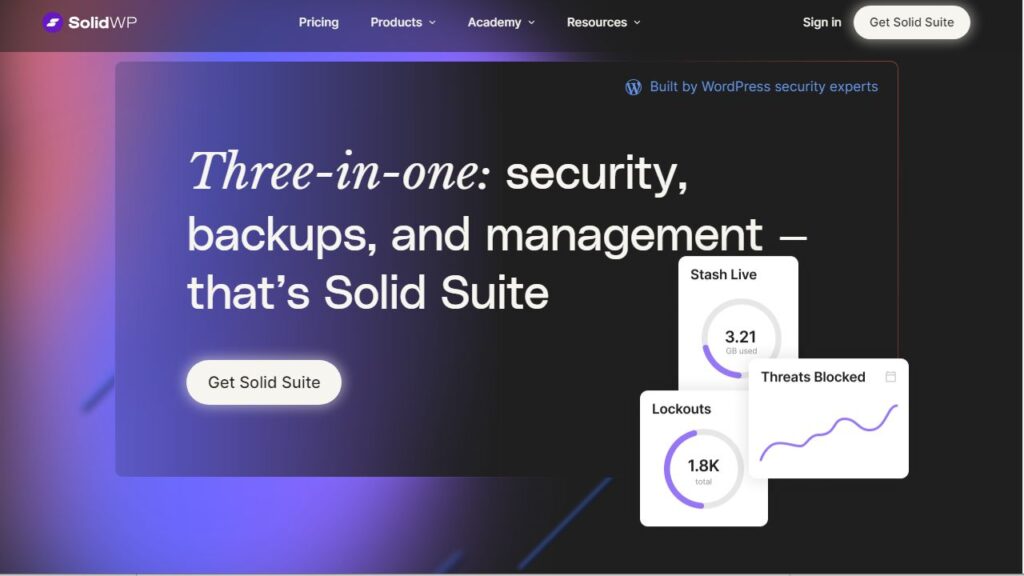
It’s an unfortunate truth that many ecommerce businesses overlook the critical importance of robust security measures, only to realize their significance after facing a breach. In the digital marketplace, security isn’t just a feature; it’s a foundational element of trust and reliability. Inadequate security measures expose ecommerce stores to risks that can severely damage reputation, customer trust, and financial stability. Ensuring the security of your ecommerce platform is not just about protecting data; it’s about safeguarding your brand’s integrity and the privacy of your customers.
Implementing state-of-the-art security protocols is essential for creating a secure shopping environment. This includes regular security audits, secure socket layer (SSL) encryption, and comprehensive data protection strategies. These measures not only protect sensitive information but also assure your customers that their data is in safe hands. Highlighting your security measures on your website can further enhance customer confidence, encouraging more transactions and loyalty.
One of the most significant risks of inadequate security is the potential for data breaches, which can lead to financial loss and identity theft for your customers. Such incidents can have a lasting impact on your ecommerce store, including legal repercussions and a tarnished brand image. Investing in advanced security technologies and practices is crucial for mitigating these risks. It’s not just about compliance; it’s about commitment to customer safety and trust.
SSL Certificates: Securing Your Ecommerce Store
SSL certificates play a pivotal role in securing ecommerce stores, providing a secure channel for sensitive information to be transmitted between a user’s browser and the website’s server. This encryption is crucial for protecting data such as credit card numbers, personal information, and login credentials from interception by malicious actors. An SSL certificate is not just a technical requirement; it’s a visible sign of trust and security that customers look for before making a purchase.
The importance of SSL certificates extends beyond encryption; they also contribute to your site’s credibility and SEO rankings. Search engines favor secure websites, and having an SSL certificate can boost your site’s visibility and drive more organic traffic. This is particularly important in the competitive ecommerce landscape, where every advantage counts. Displaying the secure padlock icon in the browser bar reassures customers that their data is protected, increasing the likelihood of conversion.
Choosing the right type of SSL certificate for your ecommerce store is crucial. Options range from basic domain validation certificates, suitable for small websites, to extended validation certificates, which provide the highest level of security and require thorough validation of the business. The choice depends on the size of your ecommerce operation and the level of trust you need to establish with your customers.
Payment Security: Safeguarding Customer Information
In the realm of ecommerce, payment security is paramount. Customers entrust their most sensitive information to your platform, expecting a secure transaction process. Ensuring the security of this process is not just about adopting the latest technologies; it’s about creating a secure ecosystem where customer information is guarded against all forms of cyber threats. Payment security encompasses a range of practices, from encryption and tokenization to compliance with standards like the Payment Card Industry Data Security Standard (PCI DSS).
The consequences of inadequate payment security are severe, ranging from financial fraud to loss of customer trust. Implementing robust payment security measures is a critical step in building a secure and trustworthy ecommerce environment. This includes using secure payment gateways, regularly updating security protocols, and conducting rigorous security testing. These measures not only protect your customers’ information but also position your store as a reliable and safe place to shop.
Staying compliant with industry standards like PCI DSS is not optional; it’s essential for any ecommerce business that handles credit card information. Compliance demonstrates your commitment to security and can significantly reduce the risk of data breaches. Moreover, educating your customers about the security measures in place and how they can protect their own information adds an extra layer of trust and security.
7. Neglecting Post-Purchase Follow-Up
Have you ever wondered why some ecommerce stores retain customers better than others? The secret often lies in the quality of their post-purchase follow-up. Neglecting this crucial phase can be a costly mistake, leaving customers feeling undervalued and less likely to return. A well-structured post-purchase strategy not only boosts customer satisfaction but also opens avenues for repeat business and referrals.
Implementing an effective post-purchase follow-up process shows customers that their satisfaction is a priority, enhancing their overall shopping experience. This can include personalized thank-you emails, satisfaction surveys, or invitations to join a loyalty program. Each interaction is an opportunity to strengthen the relationship and encourage future purchases.
Furthermore, post-purchase follow-up is an invaluable tool for gathering feedback. Customer insights collected during this phase can highlight areas for improvement and innovation. By acting on this feedback, ecommerce businesses can refine their offerings and customer service, leading to a better product-market fit and enhanced customer loyalty.
Email Marketing: Enhancing Customer Retention by 25%

Is email marketing still relevant in the age of social media and instant messaging? Absolutely. Email marketing remains a powerful tool for enhancing customer retention, with the potential to increase it by as much as 25%. This strategy allows ecommerce businesses to maintain a direct line of communication with their customers, delivering personalized content and offers that encourage repeat purchases.
By segmenting email lists based on customer behavior and preferences, businesses can tailor their messages to meet the specific needs and interests of different audience segments. This personalization enhances the customer experience, making each communication feel relevant and valuable. Whether it’s exclusive offers, product updates, or valuable content, each email can strengthen the customer relationship.
Moreover, email marketing is an excellent channel for implementing post-purchase follow-up strategies. Automated emails can be set up to thank customers for their purchase, request product reviews, or offer assistance with their recent acquisition. This proactive approach not only improves customer satisfaction but also opens the door to feedback and ongoing engagement.
Feedback Loops: The Secret to Ecommerce Store Improvement
How can ecommerce stores continuously improve and adapt to changing customer expectations? The answer lies in establishing effective feedback loops. Feedback loops are essential for understanding customer satisfaction, identifying issues, and uncovering opportunities for improvement. By actively seeking and acting on customer feedback, ecommerce businesses can enhance their product offerings, customer service, and overall shopping experience.
Creating a structured process for collecting, analyzing, and implementing feedback is crucial. This can involve post-purchase surveys, product review requests, and direct customer outreach. Each feedback channel provides unique insights that can drive strategic decisions and innovations. Listening to your customers and making changes based on their input demonstrates a commitment to excellence and customer satisfaction.
Moreover, feedback loops are instrumental in building a customer-centric culture. They encourage continuous learning and adaptation, ensuring that the ecommerce store evolves in alignment with customer needs and preferences. This agility can be a significant competitive advantage, enabling businesses to stay ahead in the fast-paced ecommerce landscape.
Sidestepping Pitfalls: Your Blueprint for Ecommerce Store Triumph
Navigating the intricate landscape of ecommerce can be a daunting task for many entrepreneurs. With the digital marketplace becoming increasingly competitive, understanding how to sidestep common pitfalls can set the foundation for your ecommerce store’s triumph. This blueprint is designed to guide you through the essential steps and strategies, ensuring that your online business not only survives but thrives in today’s digital ecosystem.
The first step in avoiding ecommerce pitfalls is to conduct thorough market research. Understanding your target audience’s needs, preferences, and buying behaviors is crucial. This insight allows you to tailor your product offerings, marketing strategies, and customer service approaches to meet and exceed customer expectations. Ignoring market research can lead to misaligned product-market fit, resulting in lower customer engagement and sales.
Secondly, investing in a user-friendly website design is non-negotiable. Your ecommerce store should not only look appealing but also offer seamless navigation and an intuitive shopping experience. A well-designed website can significantly reduce cart abandonment rates and enhance customer satisfaction. Remember, first impressions matter greatly in the digital world, and a clunky, outdated website can drive potential customers away.
Another critical aspect is mastering the art of customer service. In the digital age, customer expectations are higher than ever. Offering personalized service, prompt responses to inquiries, and efficient problem resolution can distinguish your ecommerce store from competitors. Leveraging technology such as chatbots, AI, and CRM systems can help in delivering exceptional customer service that fosters loyalty and repeat business.
Lastly, developing a robust digital marketing strategy is imperative for ecommerce success. Utilizing a mix of SEO, content marketing, social media, and email marketing can help in building brand awareness, attracting new customers, and retaining existing ones. A strategic approach to digital marketing enables you to reach your target audience effectively, driving traffic to your website and boosting sales.
Frequently Asked Questions (FAQ)
What are some common pitfalls to avoid when starting an ecommerce store?
Common pitfalls include ignoring user experience, underestimating the importance of SEO, providing poor product descriptions and images, overlooking customer service, neglecting security measures, failing to use social proof effectively, and not following up with customers after a purchase.
How does user experience affect my ecommerce store’s success?
A poor user experience can lead to high bounce rates, abandoned carts, and lost sales. On the other hand, a seamless and intuitive user experience enhances customer satisfaction, increases conversion rates, and encourages repeat business.
Why is SEO crucial for an ecommerce store?
SEO is vital because it improves your store’s visibility in search engine results, driving organic traffic. Effective SEO practices help your store rank higher, making it easier for potential customers to find you, which can lead to increased sales.
What makes a good product description in an ecommerce store?
A good product description is detailed, engaging, and includes relevant keywords. It should clearly explain the product’s features and benefits, appeal to the target audience, and help the product stand out from competitors.
How important are product images for an ecommerce store?
Product images are extremely important as they give customers a visual representation of what they are buying. High-quality, detailed images can significantly enhance the shopping experience and influence purchasing decisions.
What role does customer service play in ecommerce?
Customer service is crucial in building trust and loyalty. Effective customer support, such as live chat and prompt responses to inquiries, can lead to positive customer experiences, repeat business, and word-of-mouth referrals.
How can I improve security for my ecommerce store?
Improving security involves using SSL certificates, securing payment gateways, regularly updating security protocols, and complying with standards like PCI DSS. These measures protect customer data and build trust.
What is social proof, and how can it help my ecommerce store?
Social proof includes customer reviews, testimonials, and user-generated content. It helps build trust and credibility by showing potential customers that others have had positive experiences with your products, which can boost sales.
Why is mobile optimization important for ecommerce stores?
Mobile optimization ensures that your store functions well on smartphones and tablets. With a significant amount of online shopping done via mobile devices, a mobile-friendly site is essential for providing a good user experience and increasing sales.
What are some strategies for reducing cart abandonment in my ecommerce store?
Strategies include optimizing the checkout process for simplicity, providing multiple payment options, offering guest checkout, displaying trust signals, and using email reminders for abandoned carts.
How can I leverage customer feedback to improve my ecommerce store?
Collecting and analyzing customer feedback through reviews, surveys, and direct outreach can provide insights into areas of improvement, help refine products and services, and enhance the overall customer experience.
What should I do after a customer makes a purchase?
After a purchase, it’s important to follow up with a thank-you email, request feedback or reviews, offer additional products or services, and provide support if needed. This helps build long-term relationships and encourages repeat business.
How can live chat increase conversions on my ecommerce store?
Live chat provides instant support to customers, answering questions and resolving issues in real-time. This immediacy can help reassure customers, reduce abandonment rates, and increase conversions.
What are the benefits of using a content delivery network (CDN) for my ecommerce store?
A CDN improves website speed by distributing content across multiple servers globally. This reduces load times for visitors, enhances user experience, and can improve your search engine rankings.
How do I choose the right ecommerce platform for my store?
Choose an ecommerce platform based on factors like ease of use, customization options, scalability, payment gateways, security features, and customer support. It’s important to select a platform that aligns with your business goals and technical capabilities.


